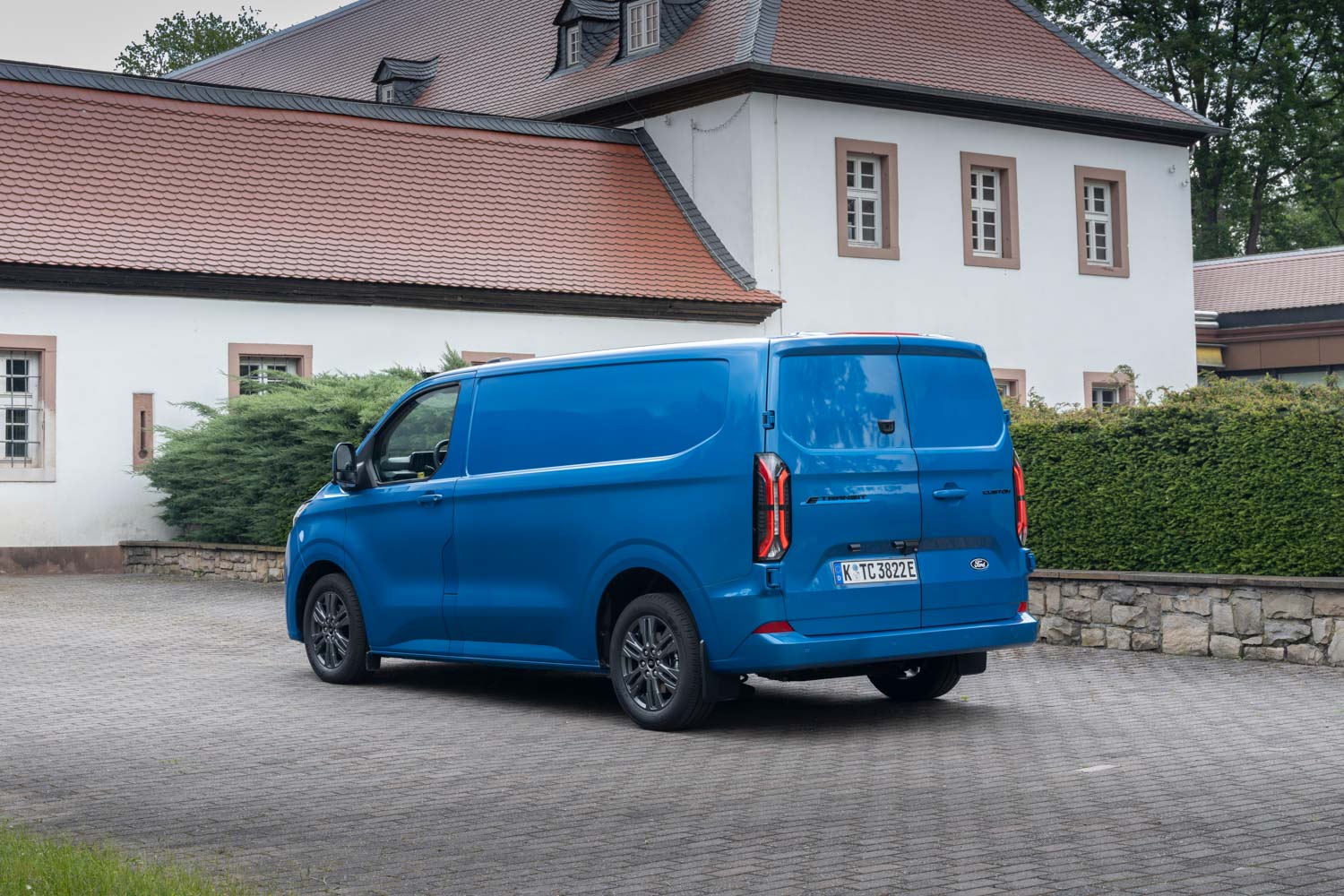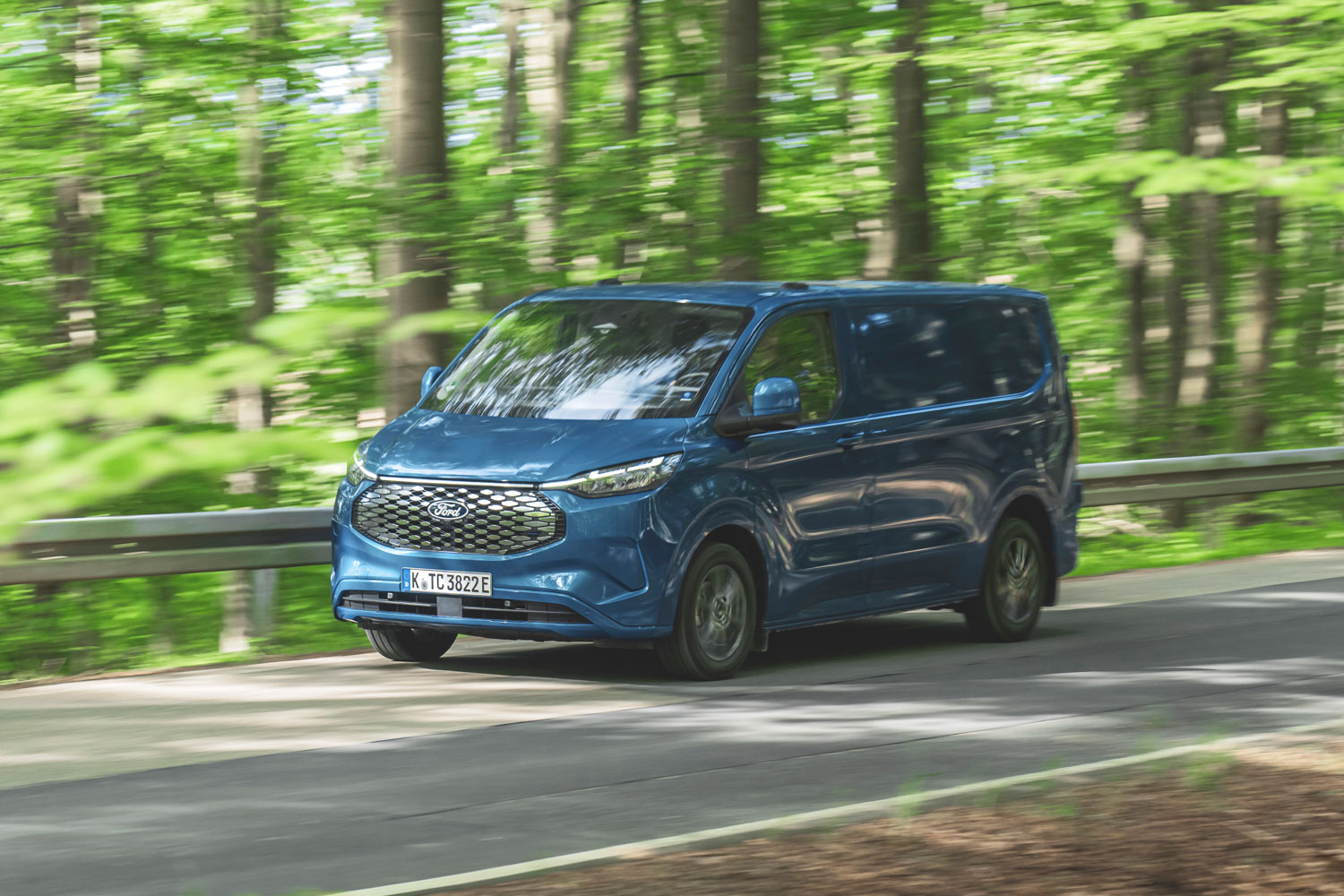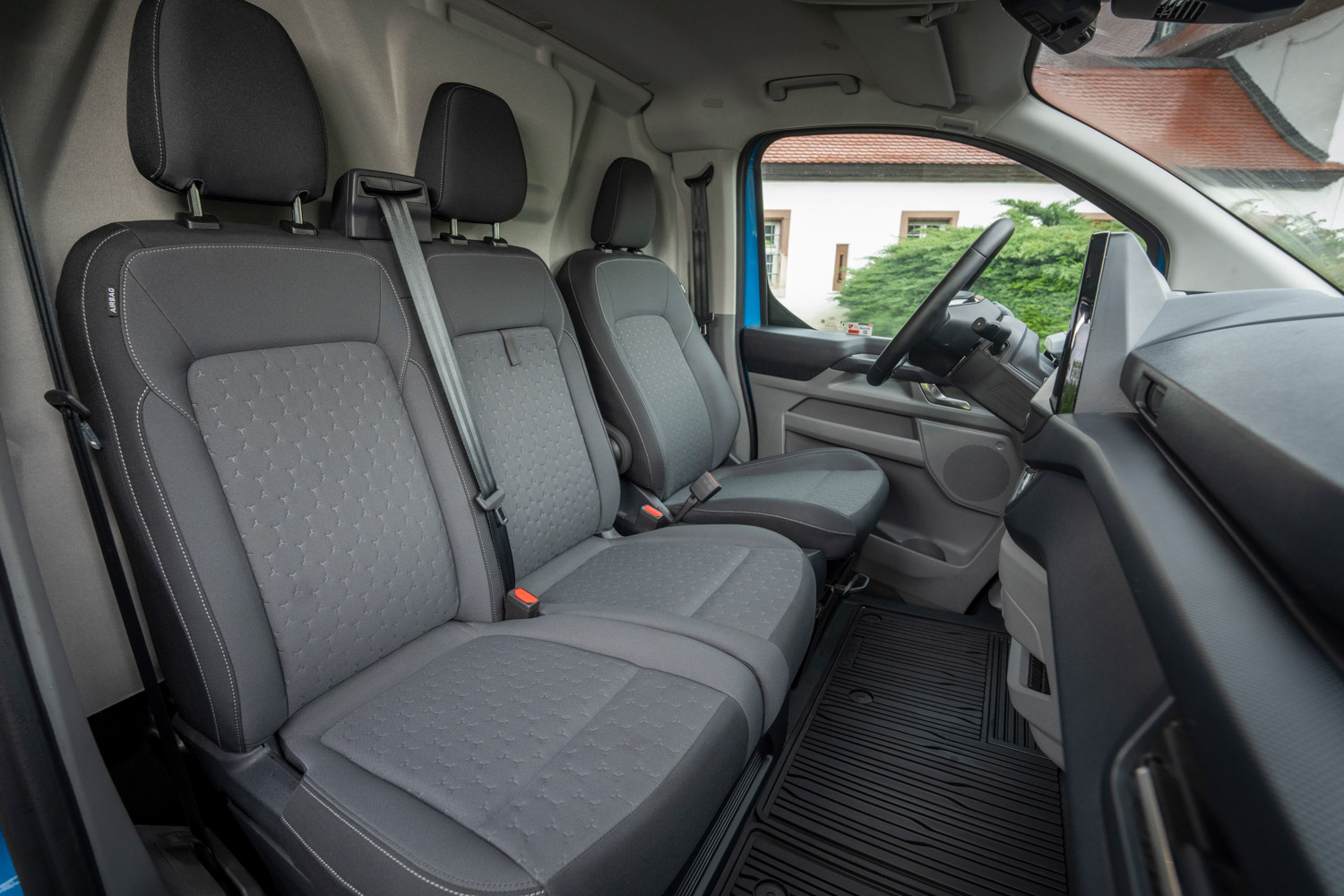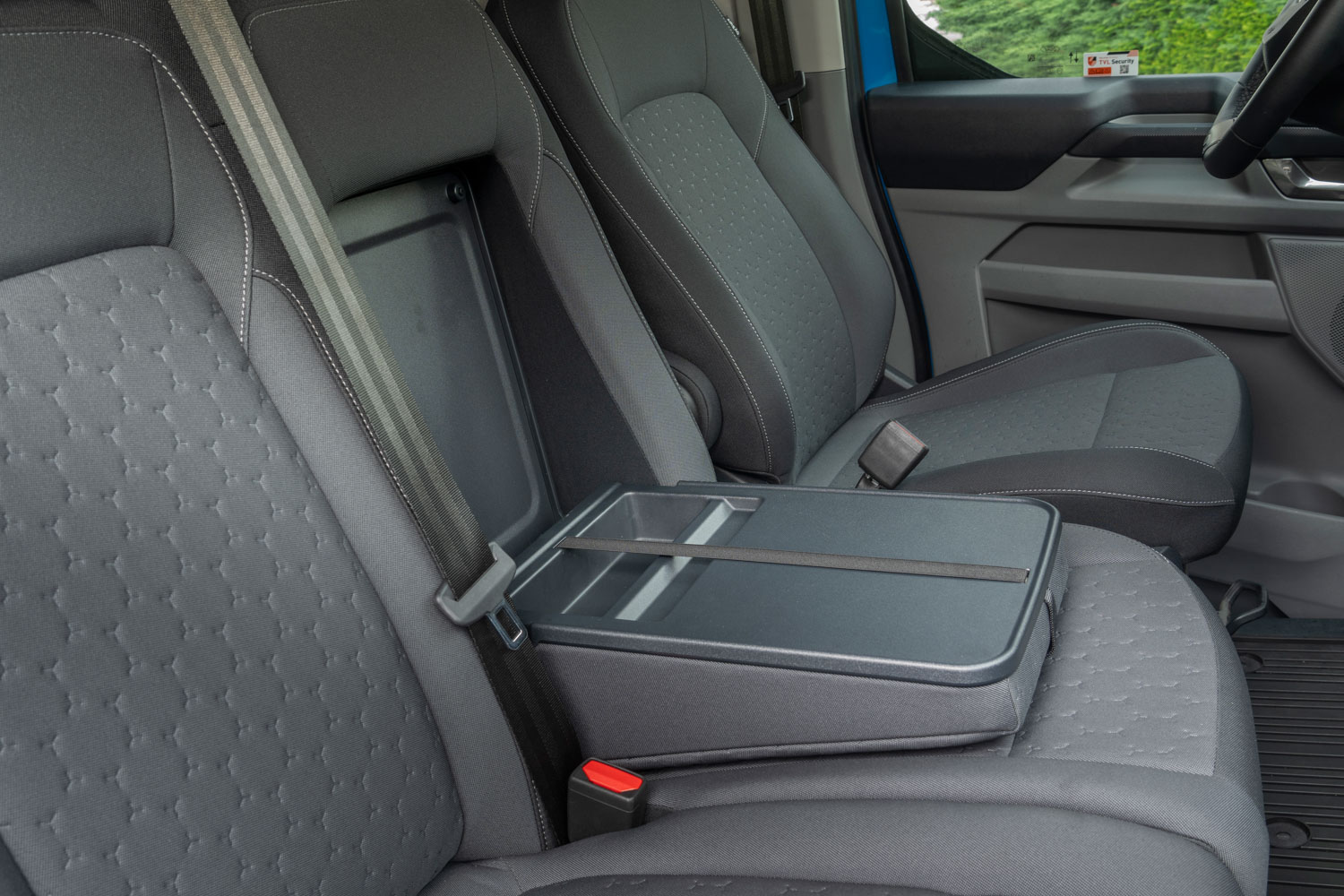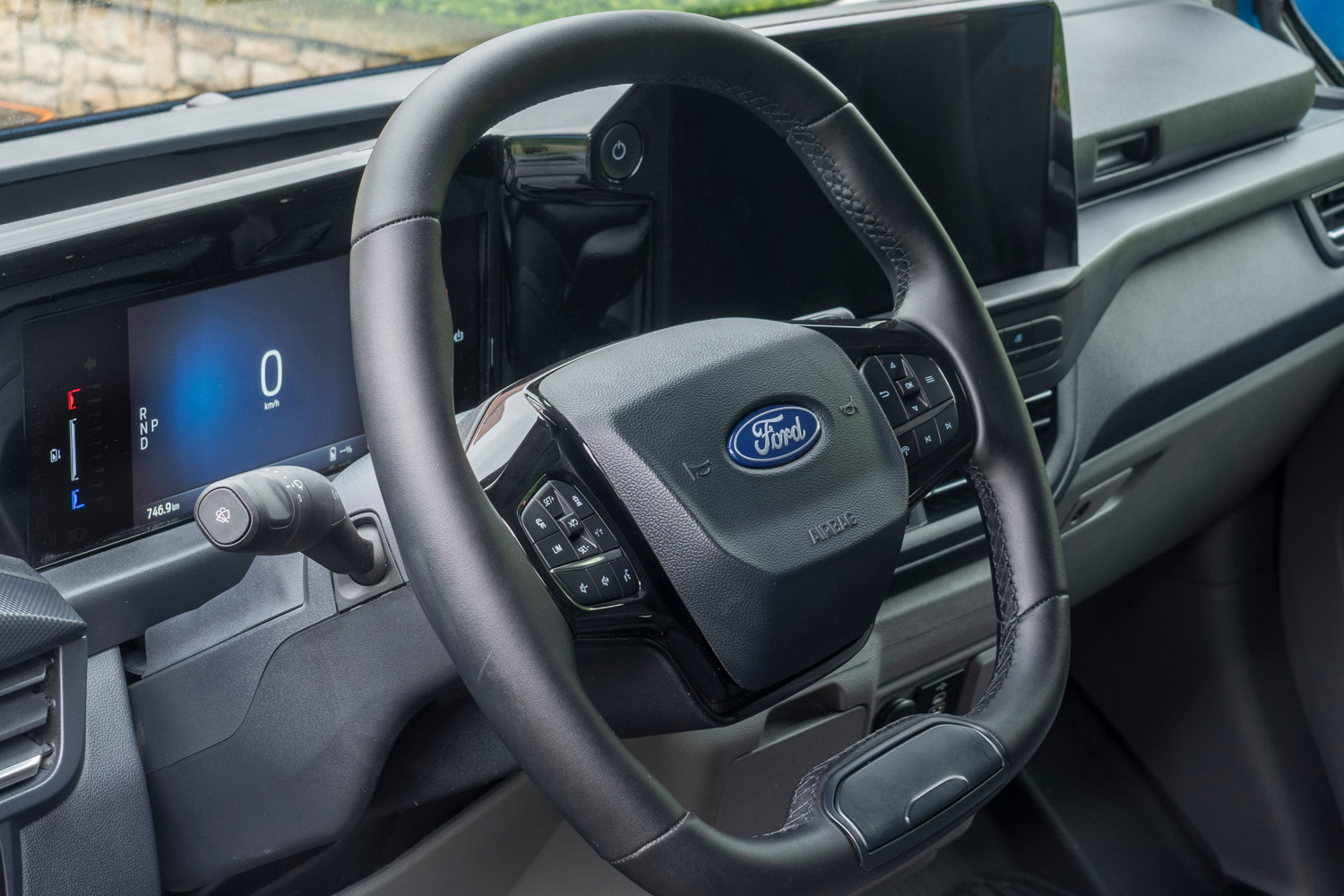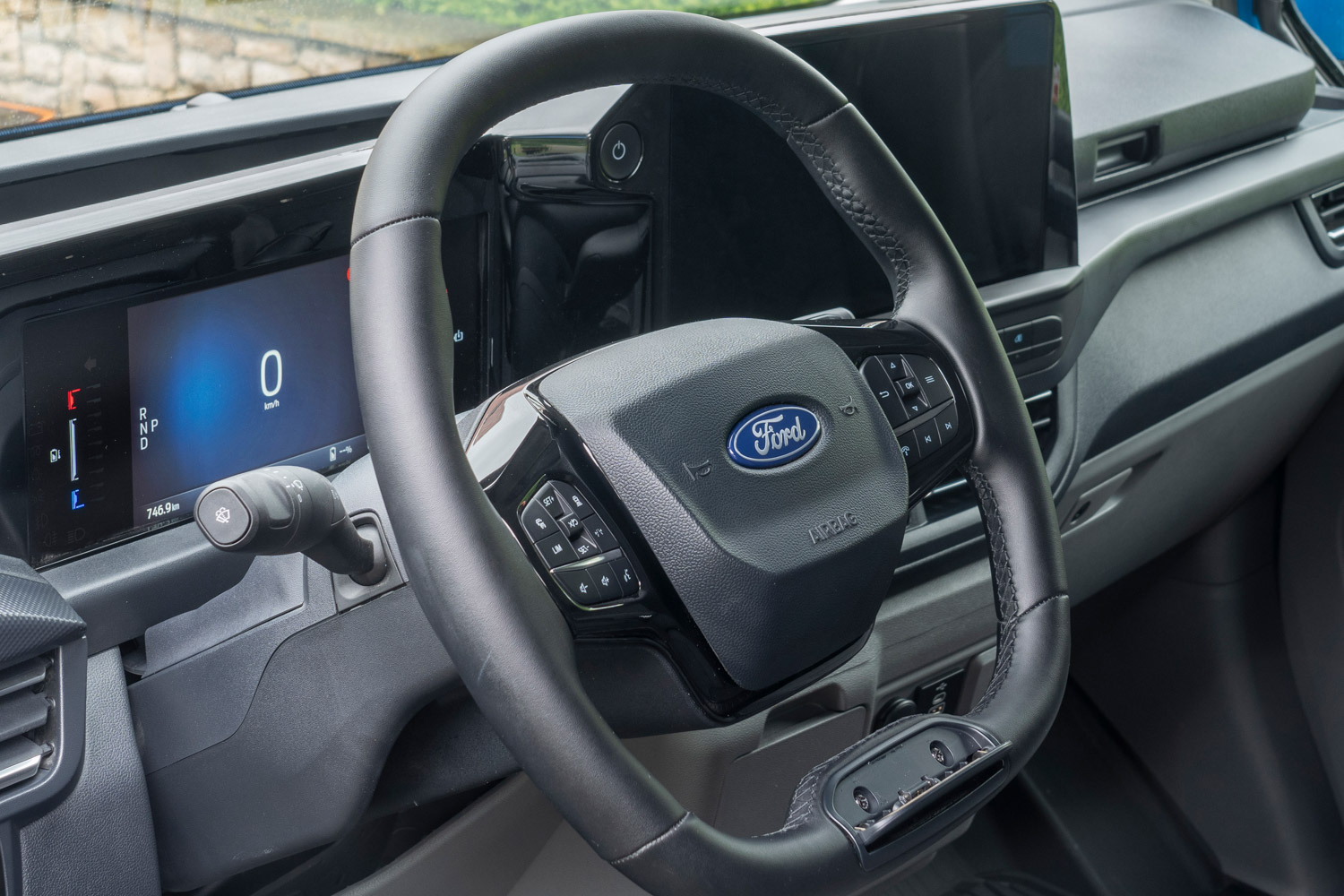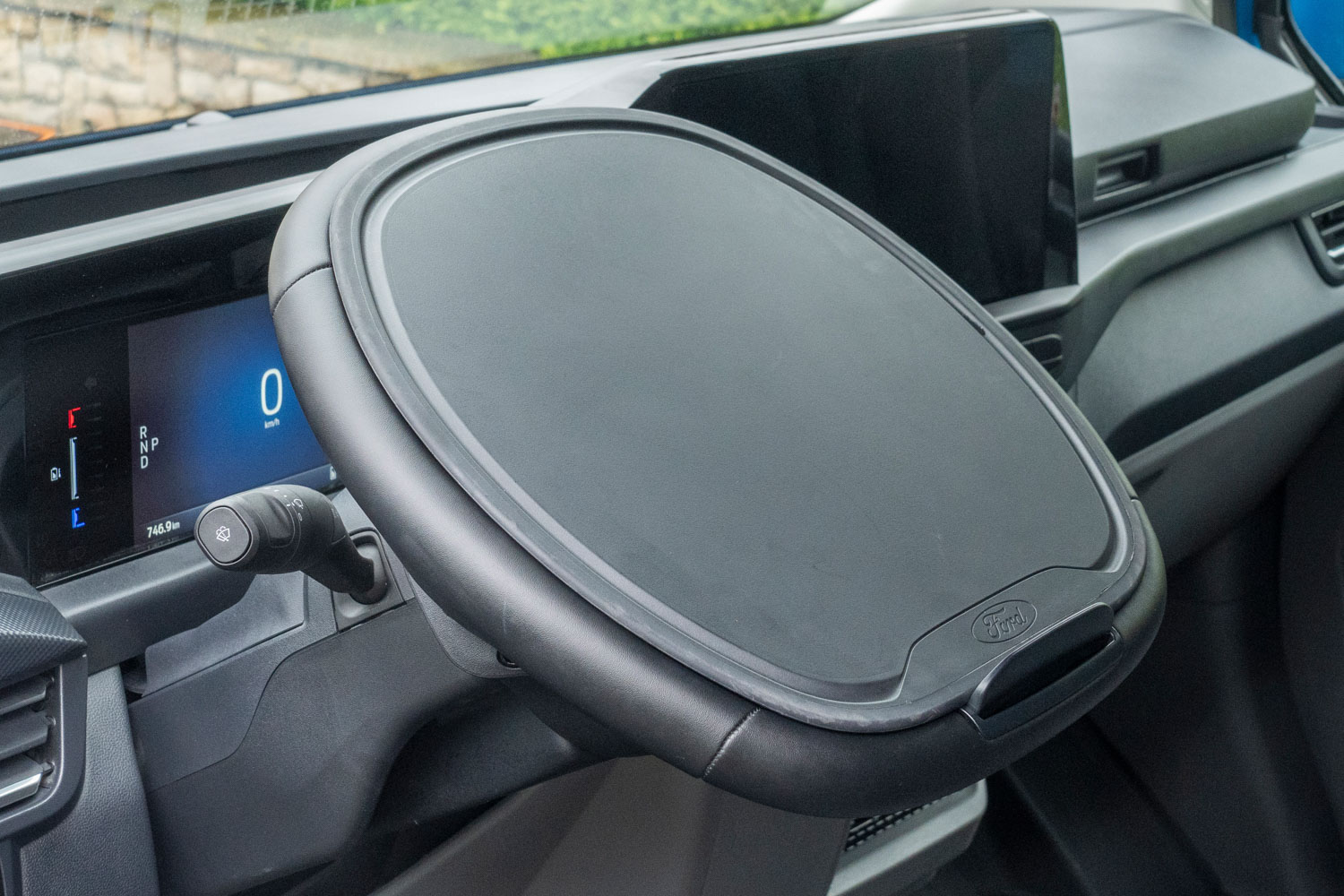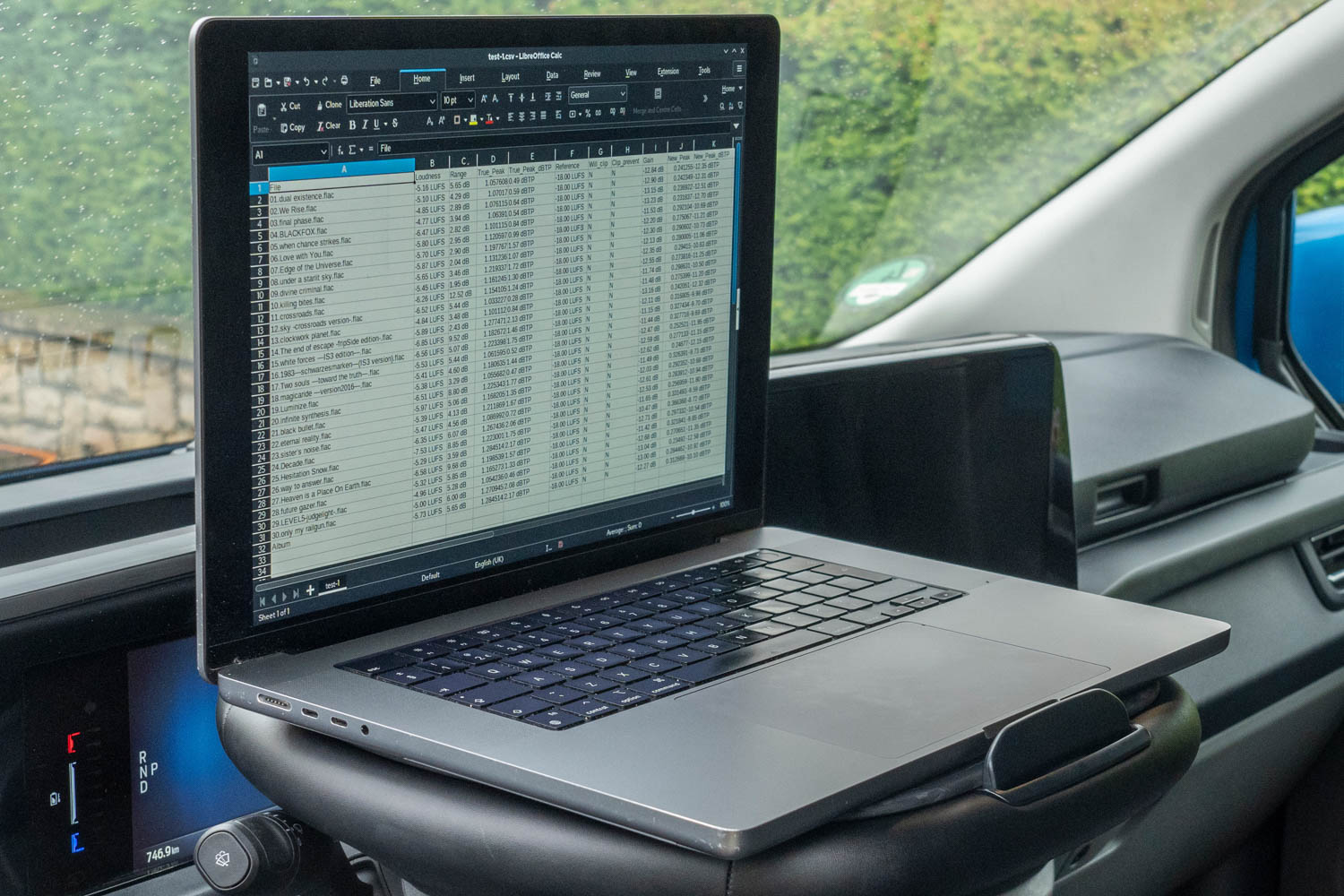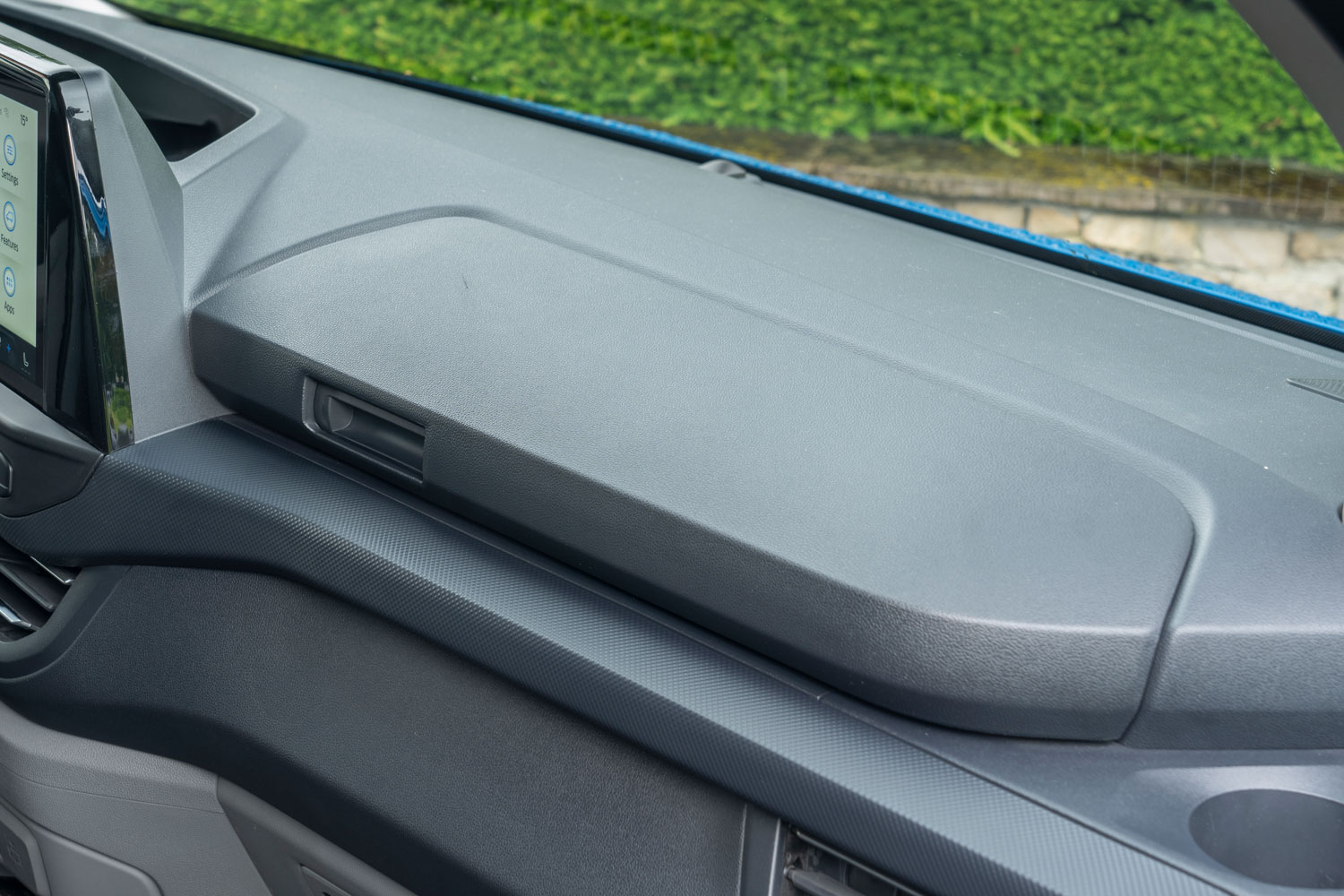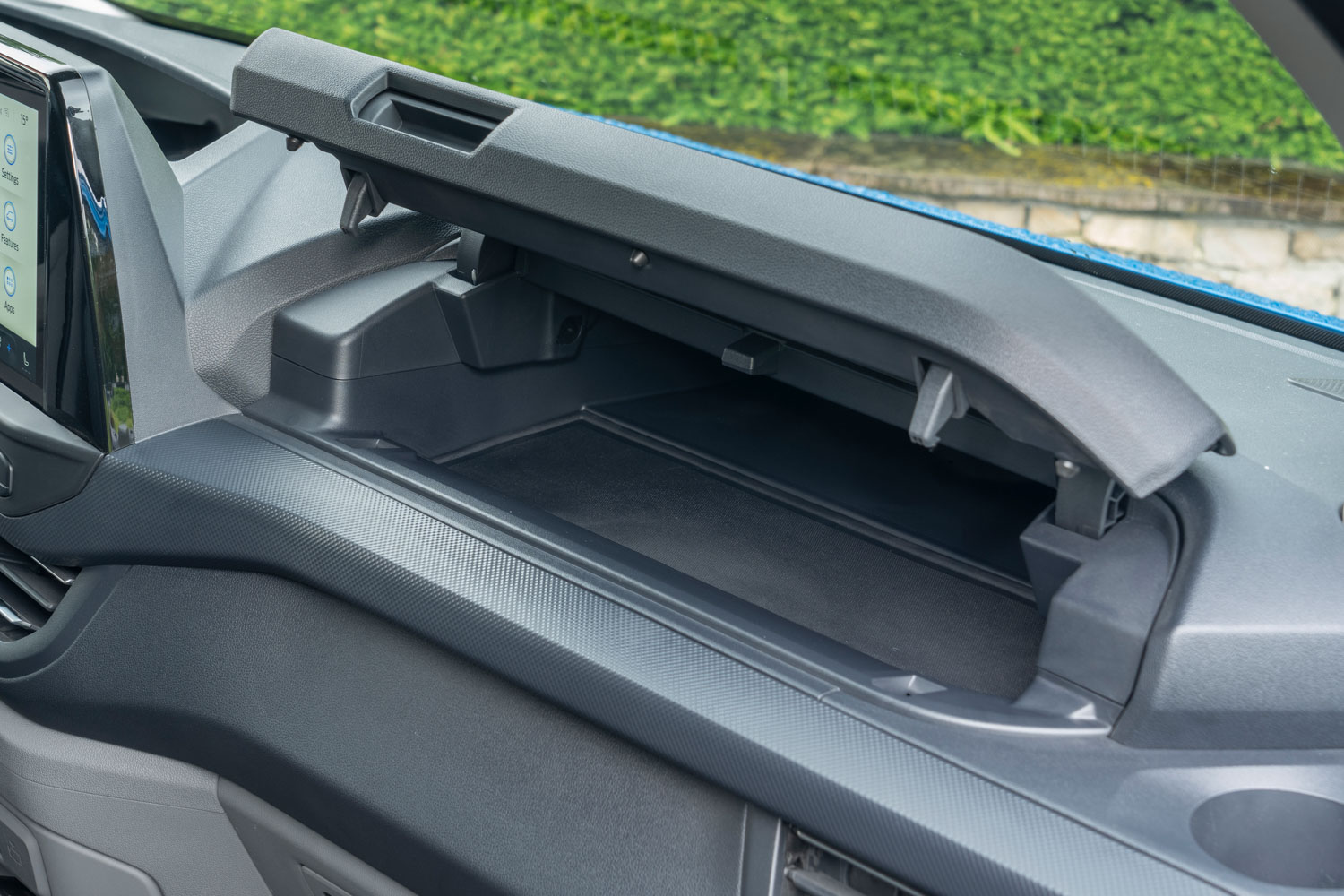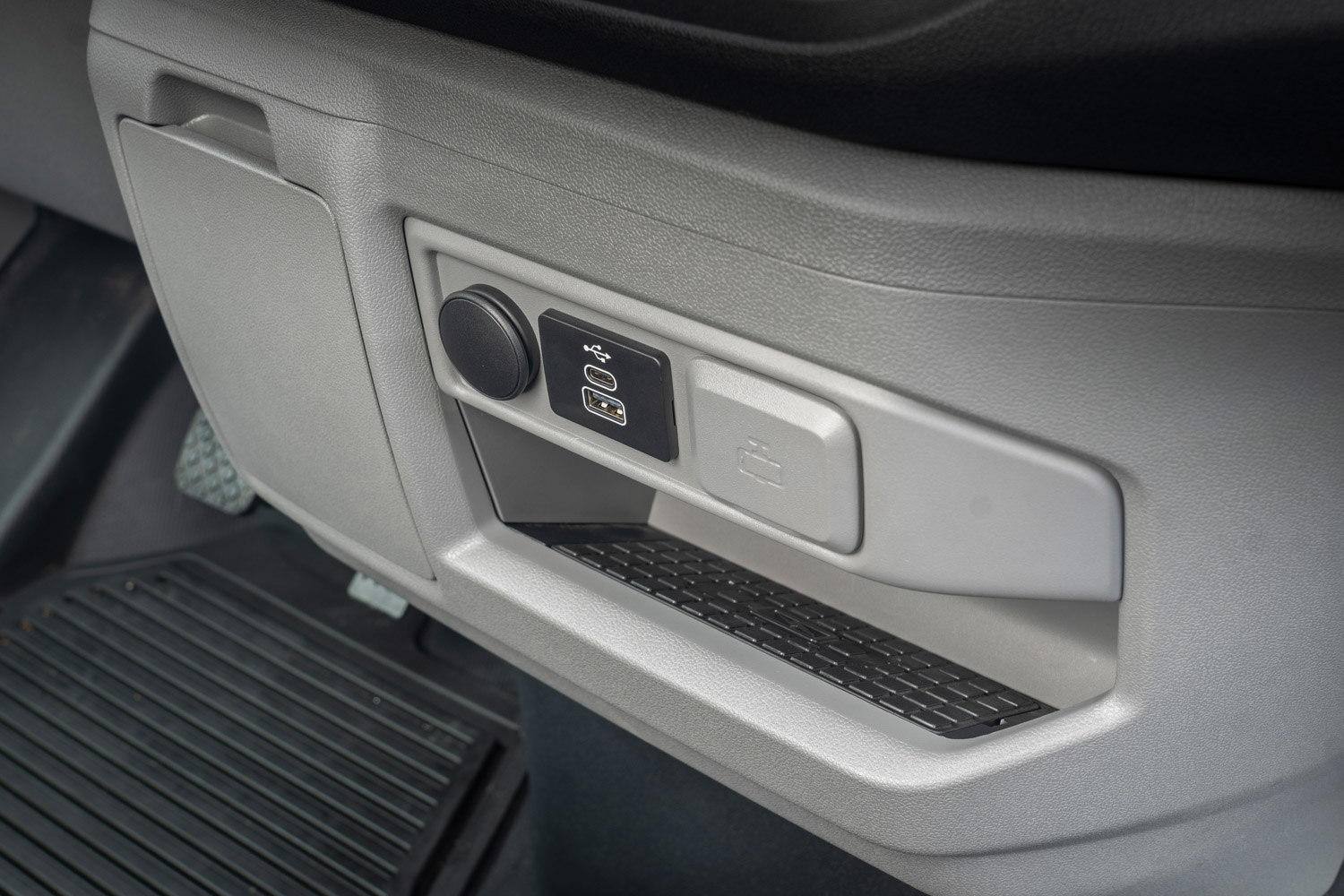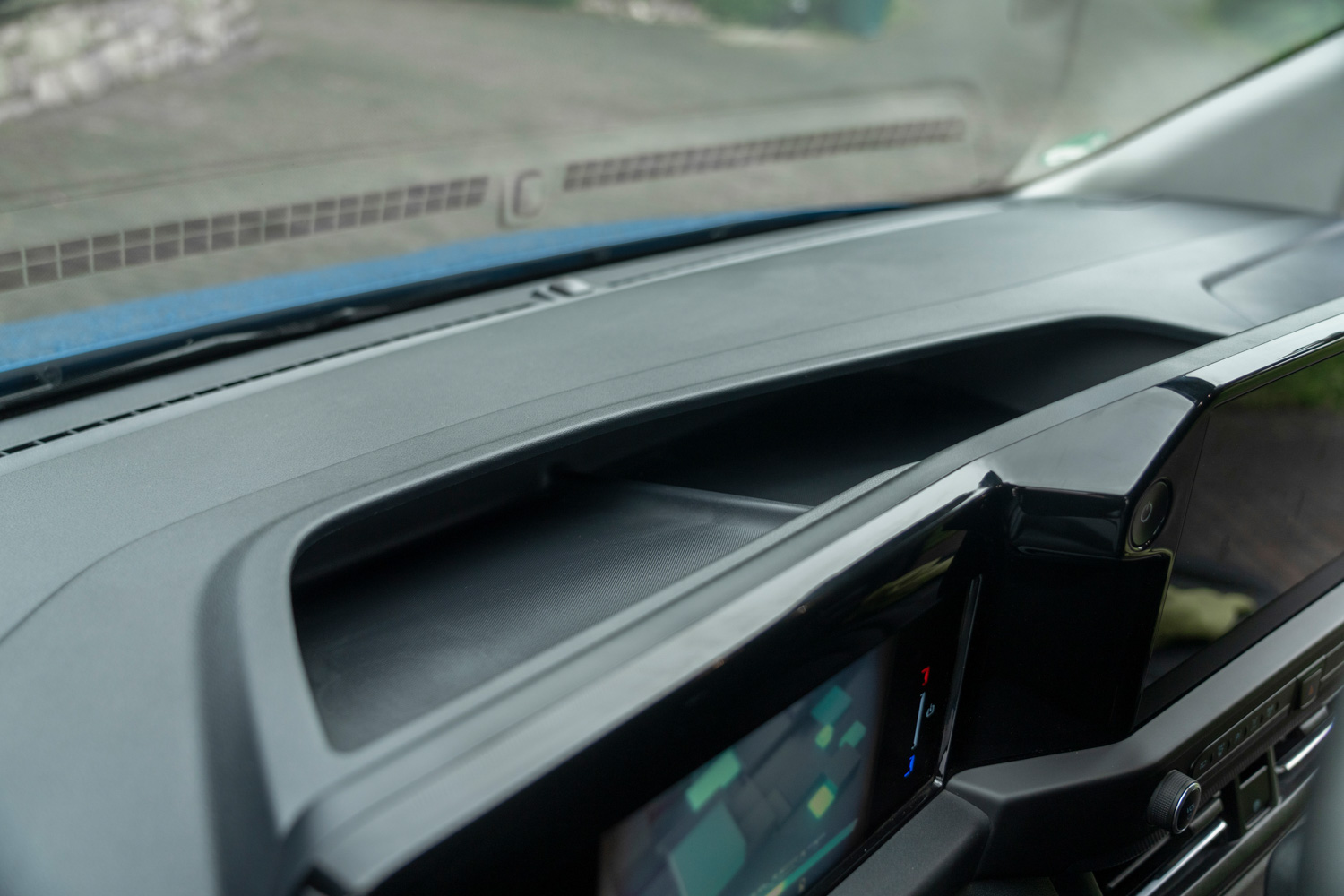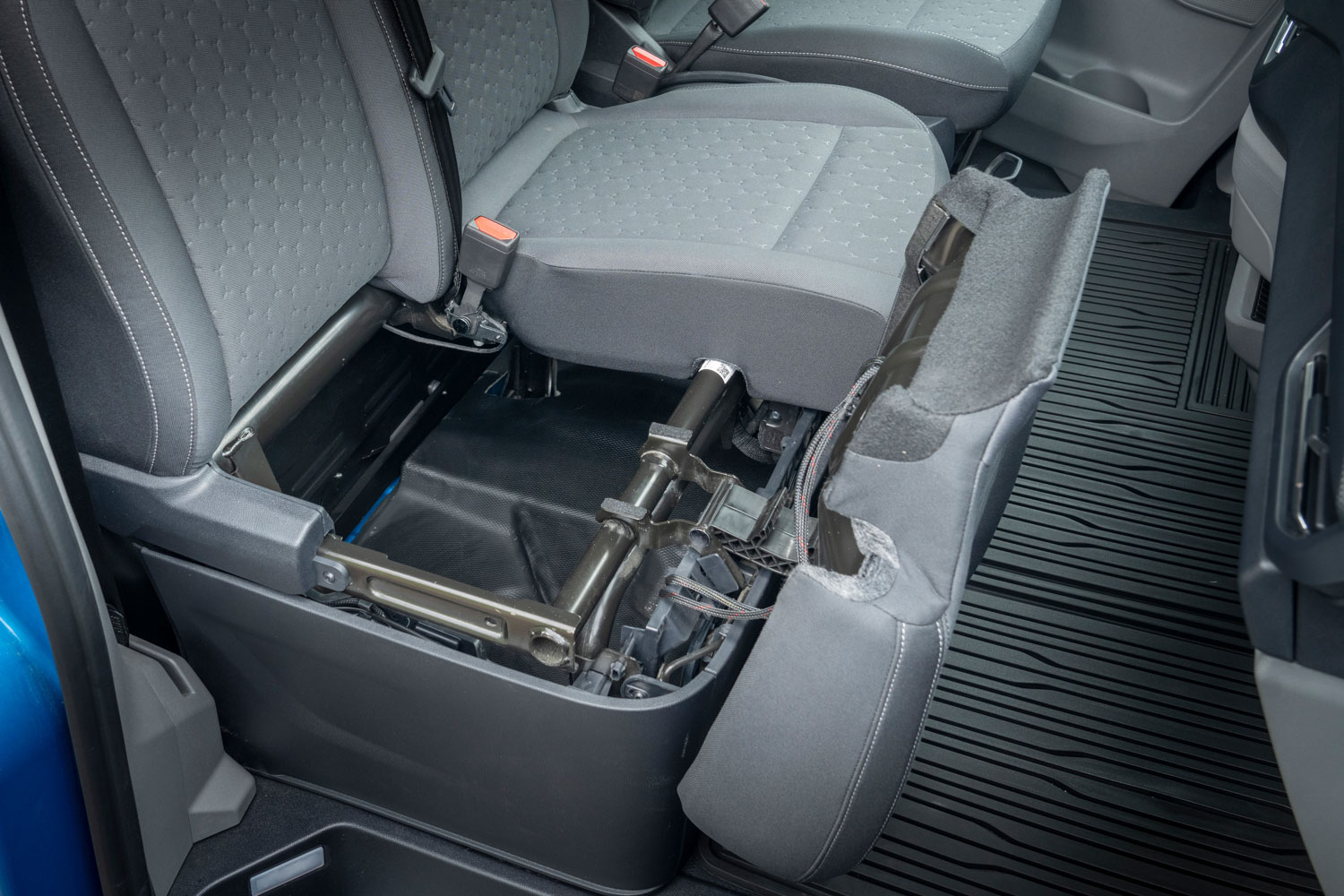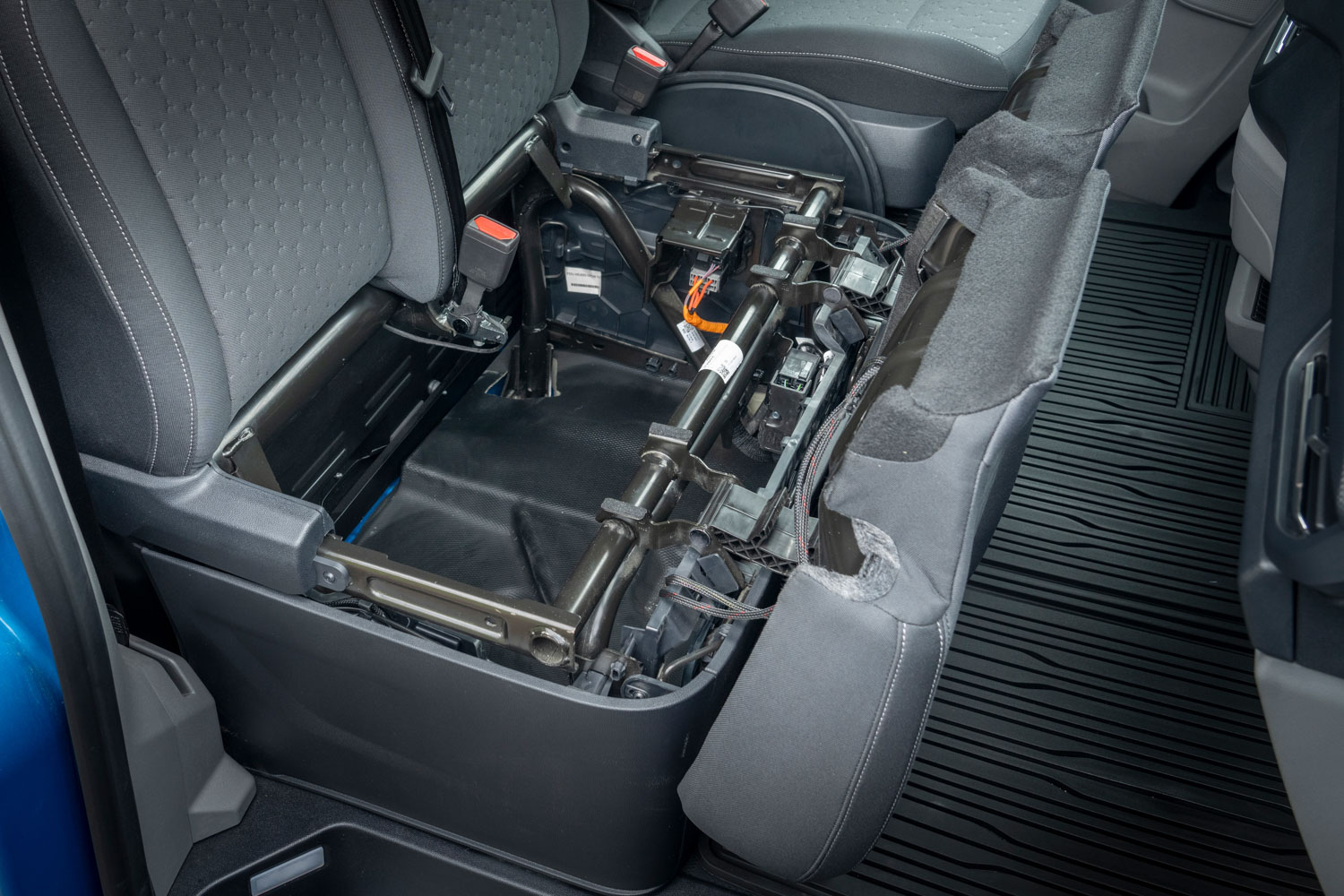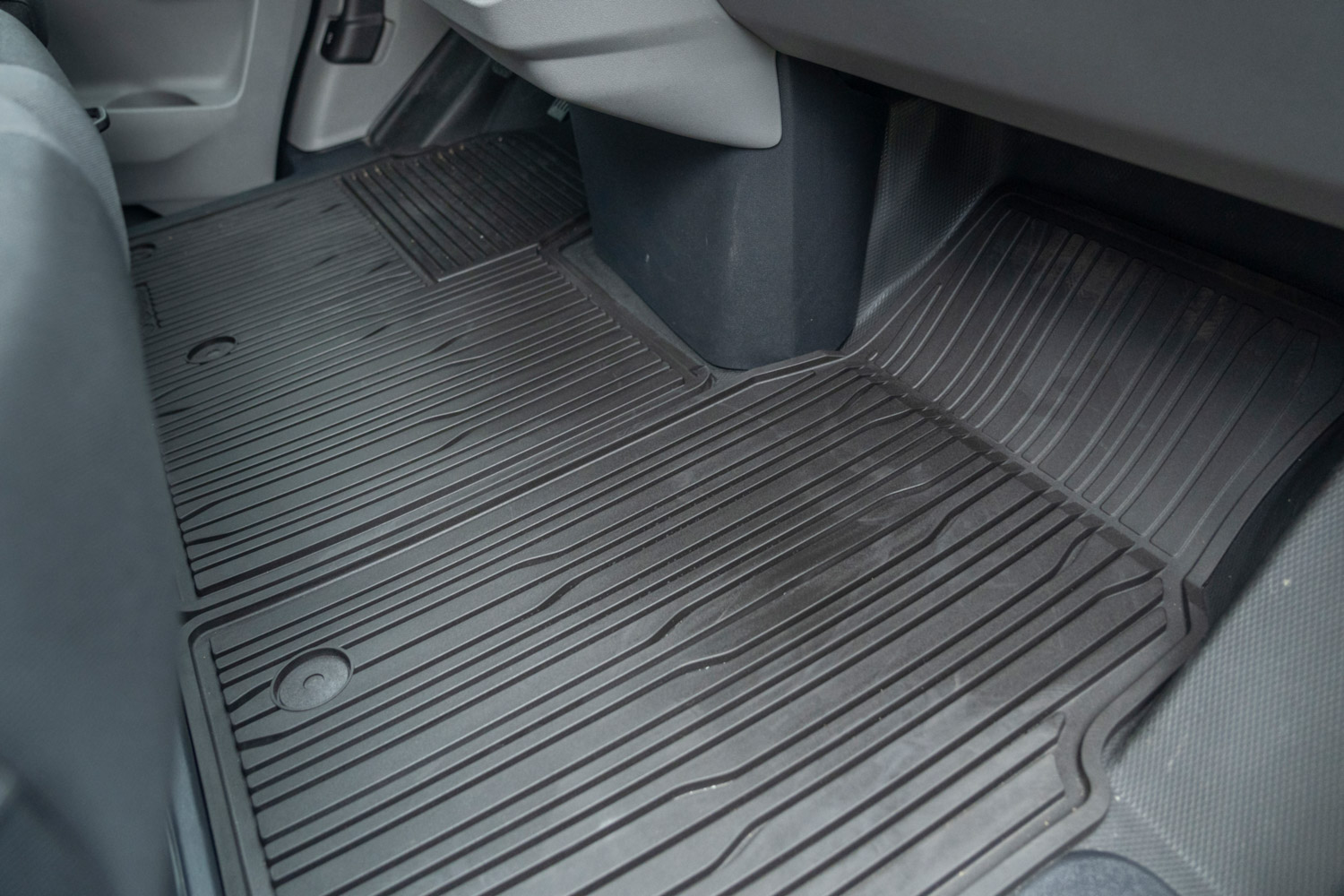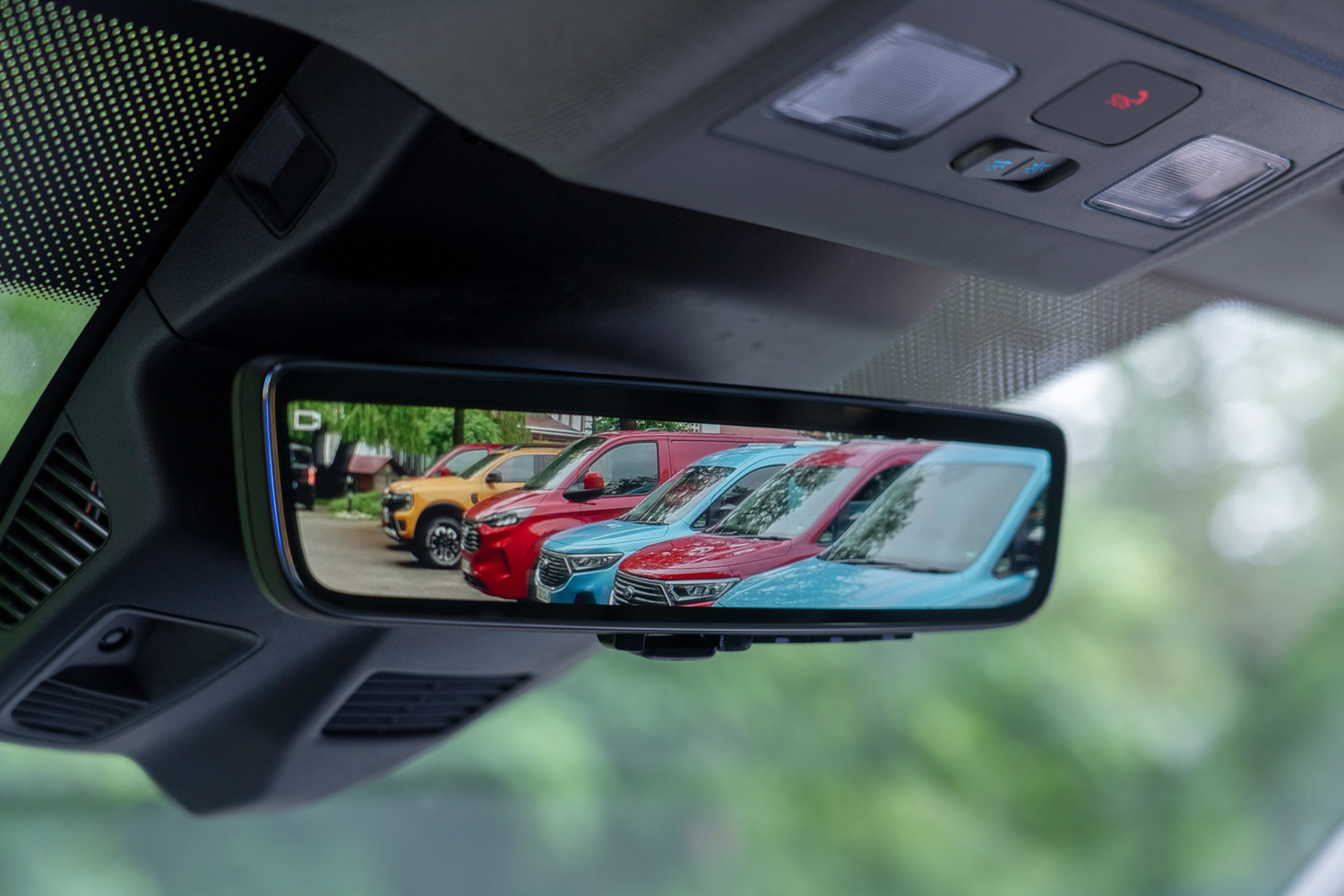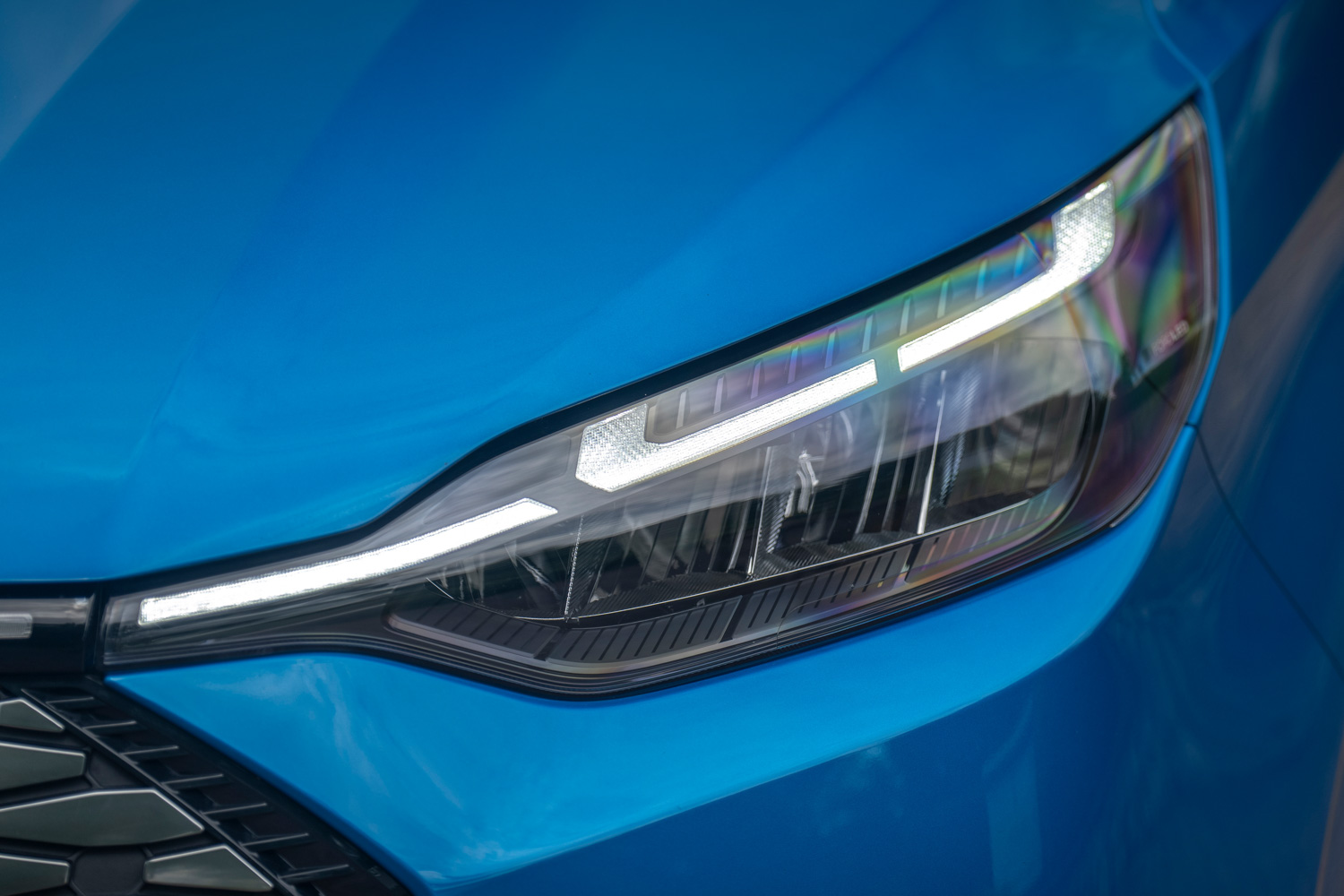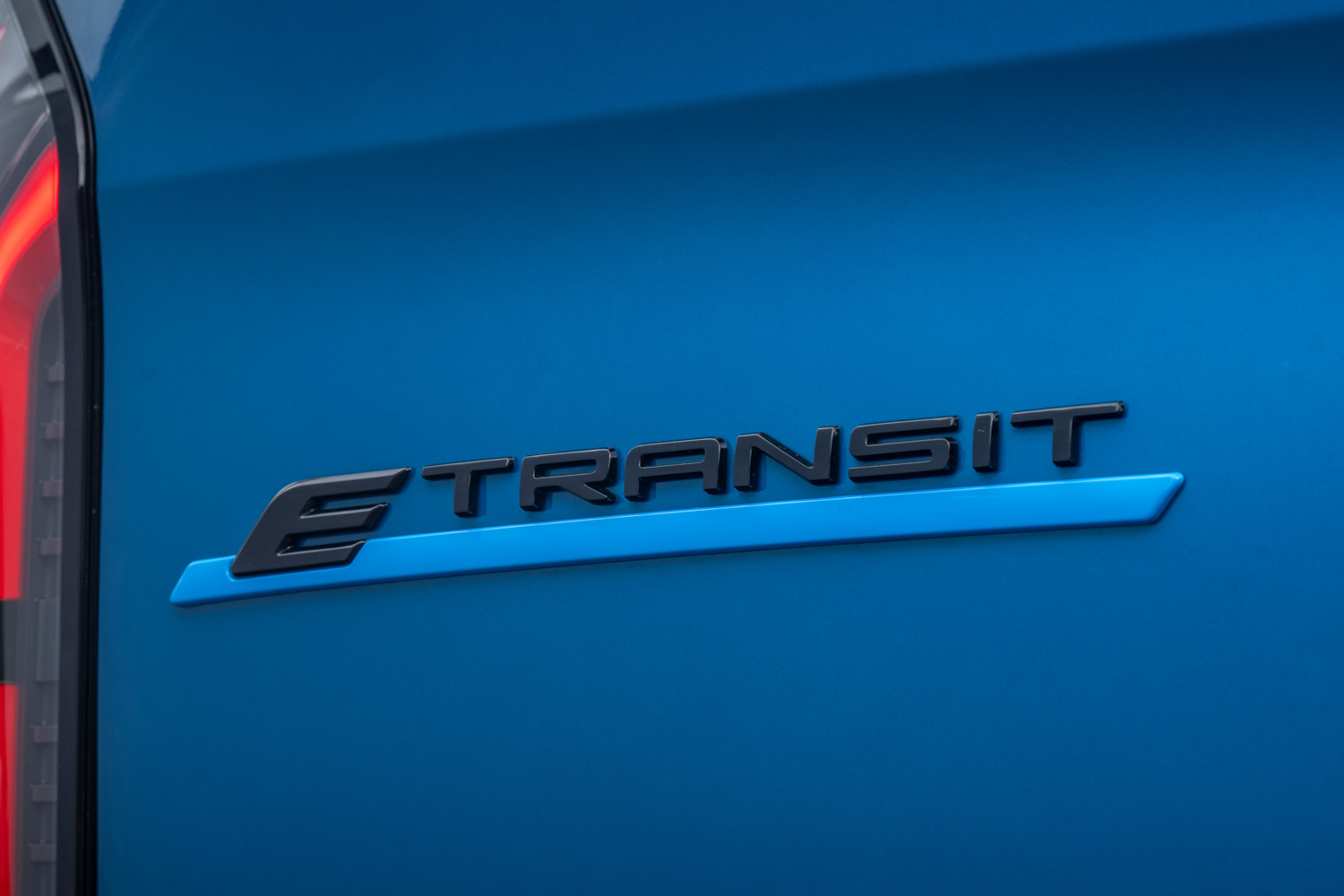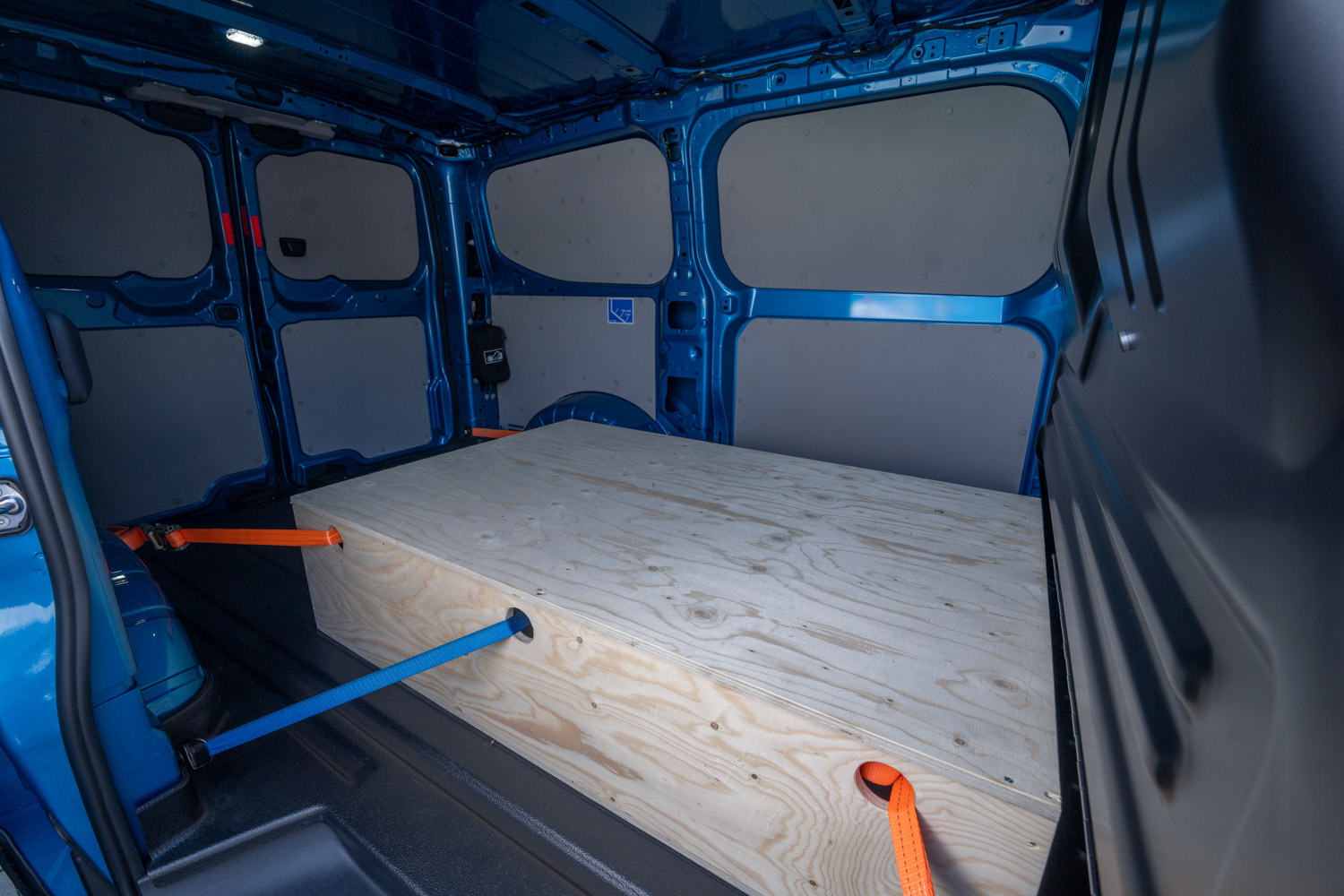Ford’s Transit Custom is a mainstay of the commercial vehicle world and we’ve already driven it in the commonplace turbodiesel format. But with increasing electrification of all of its model ranges required, Ford hasn’t just added a plug-in hybrid derivative to the Custom family – although there is such a powertrain available – it has also decided to fully electrify this medium-sized panel van. And so, joining the larger e-Transit, now we have the e-Transit Custom. The question is, should small and medium-sized businesses be looking to make the switch from diesel to electric power for their commercial fleets with this newcomer?
Ford e-Transit Custom range
Although we’re waiting to see precisely which variants Ford will bring here, there are three different output versions of the e-Transit Custom, and essentially it can also be specified in three alternative body styles, along with a fourth in the form of the slightly less commercially oriented e-Tourneo Custom people carrier.
For the electric side of things, there is one battery size, which is 64kWh usable. That’s neither particularly small nor particularly big for this class of electric commercial, so the range claims of between 275- and 337km are acceptable rather than amazing. Also, it doesn’t matter which (power) output you choose, all e-Transit Customs (and the e-Tourneo too) deliver the same 415Nm of peak torque, while they’re all rear-driven – an interesting switch, given Transit Customs with the diesel engine are either front- or all-wheel drive, while the plug-in hybrid is front-drive only.
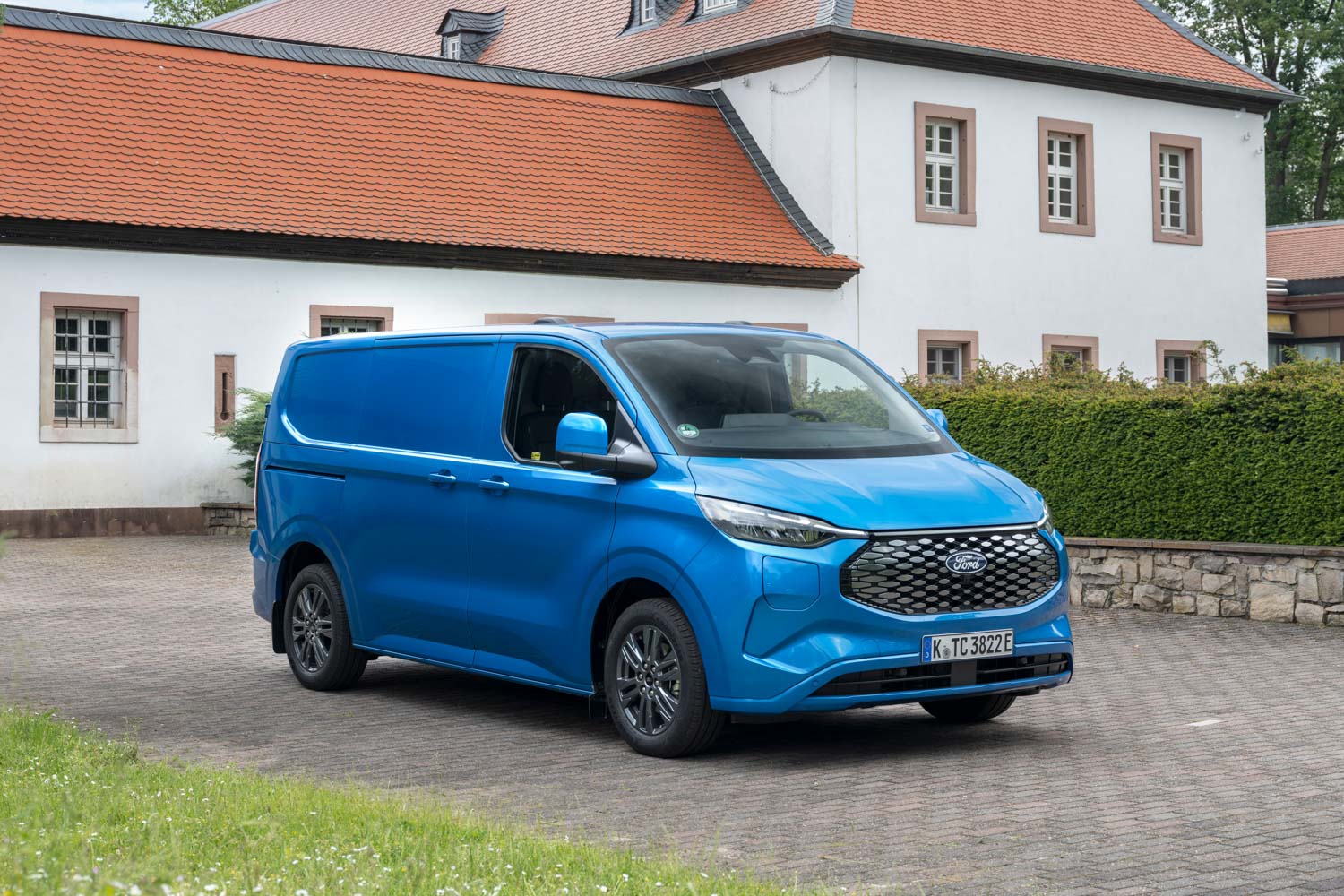
Therefore, all you’re really selecting from on the drivetrain front is whether you want increased power from your e-Transit Custom, at the expense of outright range. For the 337km figure, you’ll need a base-specification 100kW (136hp) derivative, although even in a nicer trim with bigger wheels, the one-shot capability here already drops to 325km. That number is reduced further with the next e-motor selection, the 160kW (217hp) variant we’re trying here, which has a claimed maximum of 308km. Finally, there’s an unusual 210kW (286hp) flagship which is sold in only a very sporty-looking finish called MS-RT, which reduces the claimed WLTP range to 275km. There’s no word if this one will come to Ireland, though.
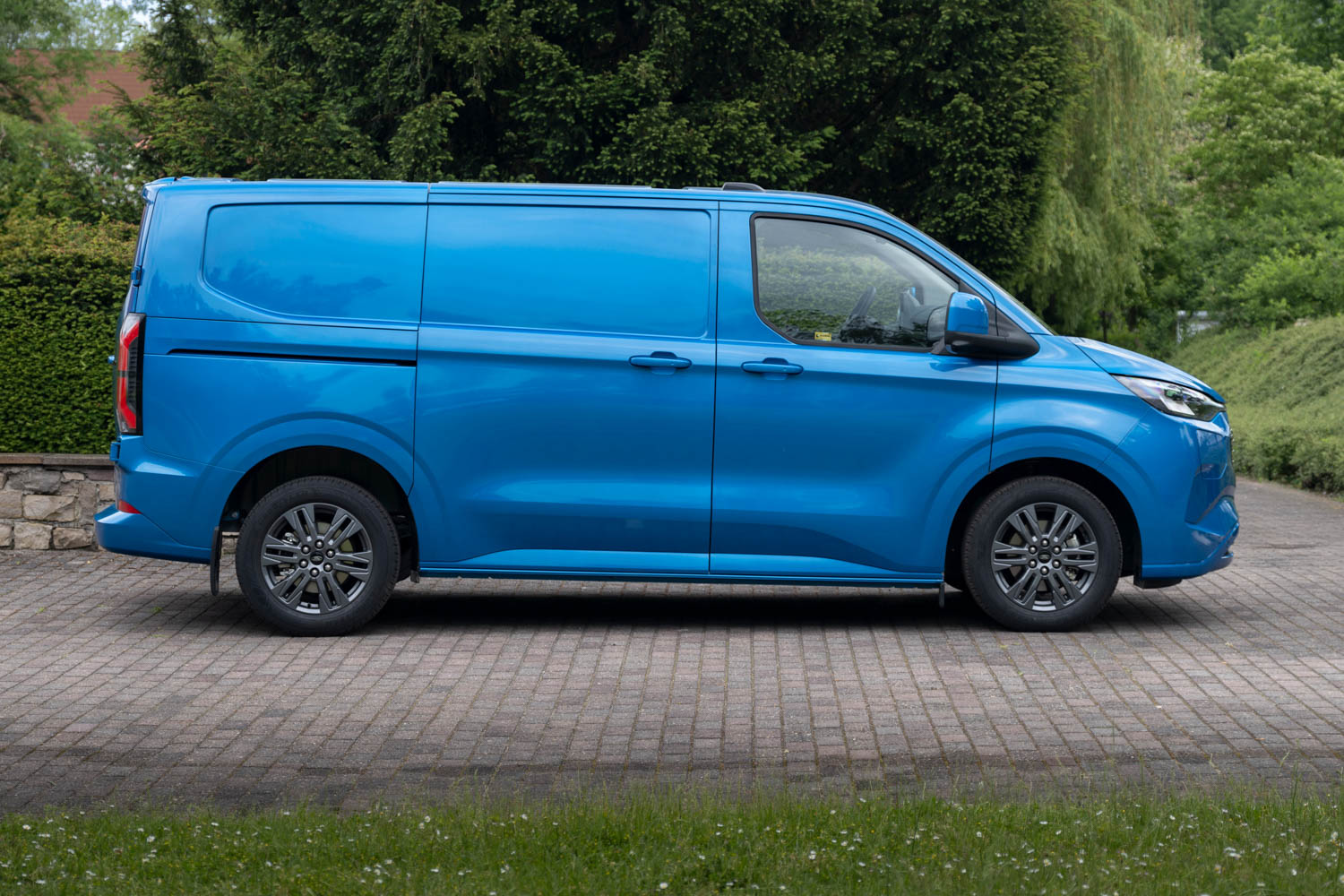
After that, you then choose which body type you’d like to have atop your chosen powertrain. The most common version will be the Van, a straightforward panel-sided commercial with a single row of three seats in the cab and the most capacious load bay. This is offered in two body lengths and a single roof height, so there’s an L1H1 as standard and then an L2H1 for those who need the maximum e-Transit Custom carrying capacity of 6.8m3. Aside from these, there’s the Double Cab in Van, which puts a second row of seating in but obviously much reduces the cargo area, then there’s the distinctive Multicab, which takes one of those second-row chairs out to give an L-shaped load bay, in an effort to balance practicality and passenger numbers.
We’ve talked about the range of the various e-Transit Custom models, but charging times are the same across the board as they all have an identical battery and maximum charging rate. That latter figure is 125kW DC, which means Ford claims its electric cargo-carrier will go from 10-80 per cent charge in just 39 minutes. For AC charging times, those lucky enough to have an 11kW connection will see a 0-100 per cent charge done in around seven hours, but for most on the more typical 7.4kW unit, it’ll take ten hours to fully replenish the e-Transit Custom’s 64kWh battery pack.
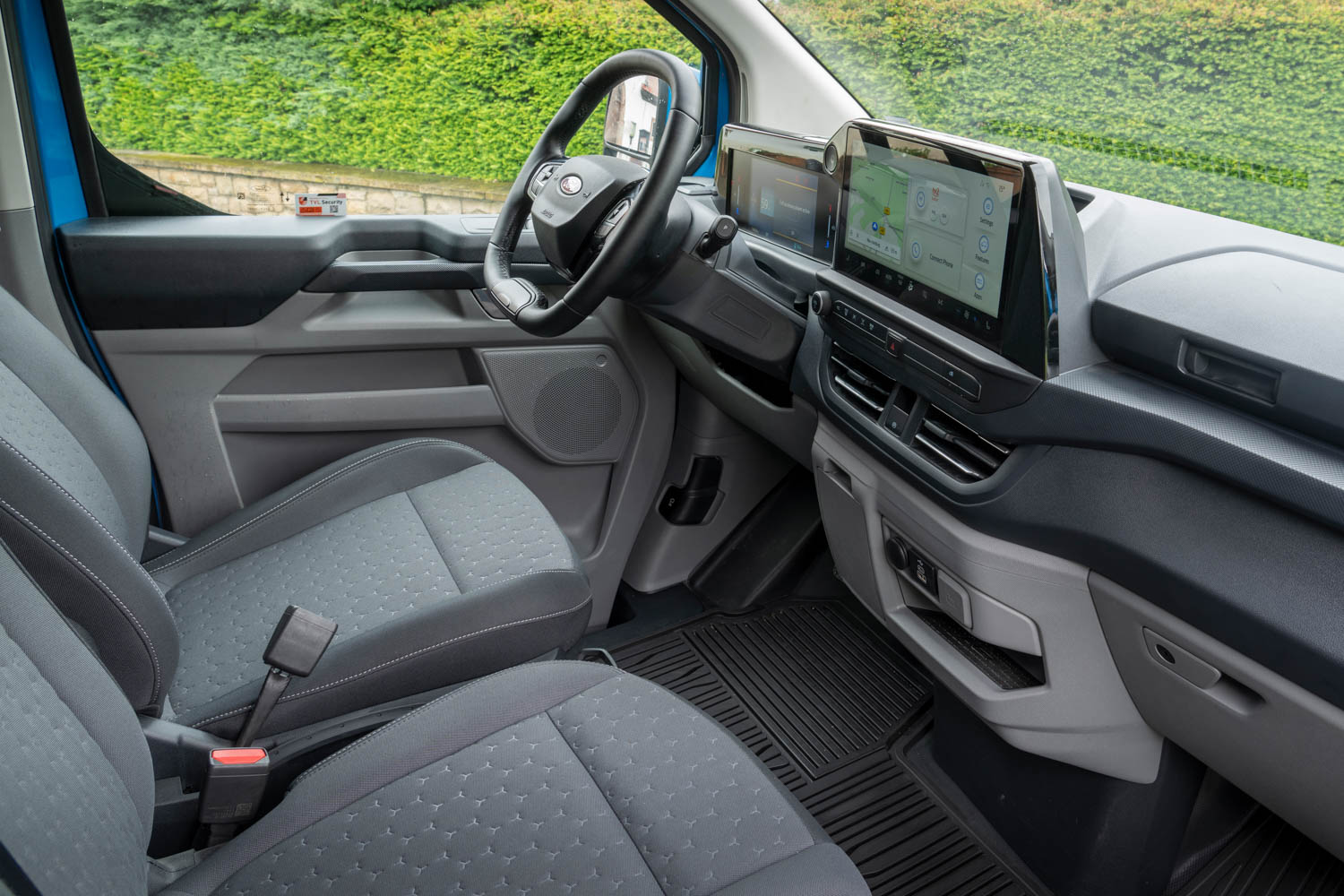
Ford e-Transit Custom interior
Arguably the Ford’s strongest suit, this is a high-quality and high-tech interior for any vehicle, never mind a commercial unit. Like some of the American company’s grandest road cars, the e-Transit Custom enjoys an over-the-air-updateable SYNC 4 infotainment system presented on a glossy 13-inch central touchscreen. This is paired to a crisp and partially configurable eight-inch digital cluster, the whole lot serving to make the e-Transit Custom’s beautifully appointed cab feel less like a van and more like that of a car.

True, the same lament aimed at much of the modern-day passenger vehicle market can be levelled at this system, in that almost all of the functions are run through the touchscreen itself – there is no separate switchgear for the climate control in the e-Transit Custom, for instance, as it permanently sits in a strip along the bottom of the central display. However, the system seems to work pretty well and Ford does put some key buttons in a bank on the console, as well as on the steering wheel, so in terms of ergonomics the e-Transit Custom’s interior is a hit.
Storage solutions are decent, too, with a central covered cubby including a wireless smartphone charging pad (where specified), a glovebox, a lidded stowage bin on top of the dash, outboard cupholders, under-seat storage, and a variety of pockets and ledges in the door cards as well, while the flat floor in the cab is retained on the electric model – meaning sliding into and out of the passenger area via either front door is easy work, especially as this e-Transit Custom has the column-mounted shift for its reduction-gear transmission.

But the e-Transit Custom’s practicality will probably be best symbolised by two optional features. The first of these is the fold-down steering wheel. Once manoeuvred into its fully flat position, a plastic centre section clips into the inside of the rim and forms a table or workpad. It’s a novel idea and a safety override means it can only be activated with the gearbox in Park, so there’s no danger of you accidentally slotting the steering wheel down while on the move.

The other feature is in the load bay, where Pro Power Onboard means power sockets are added that can provide electricity for various tools, even when the van’s owner is a long way from the nearest mains grid connection. Ford says running a circular saw for an hour will only take away 5km of range from the e-Transit Custom’s battery pack, which is less than the drain the air-conditioning seems to have on an electric vehicle’s driving capability.
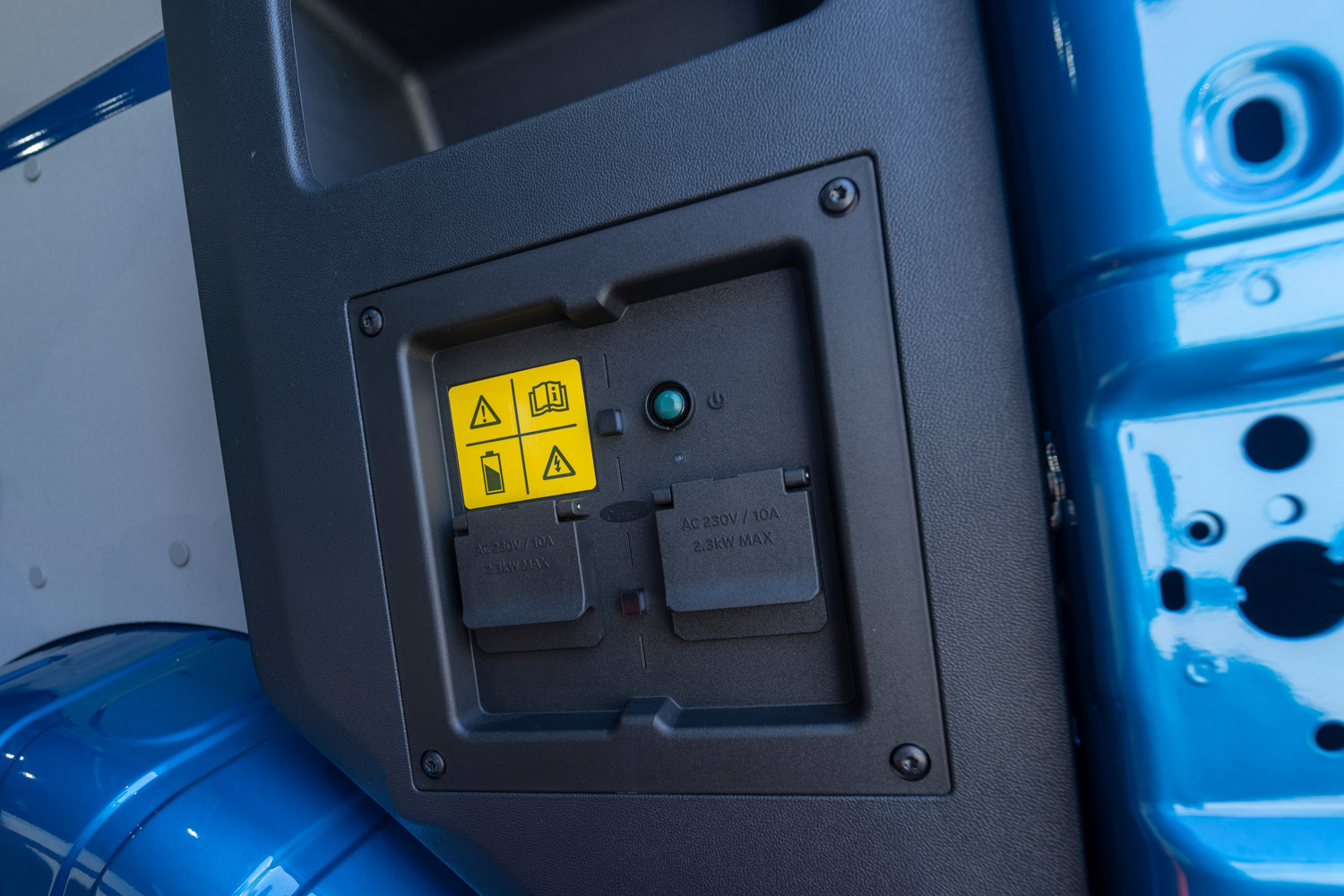
All this, alongside a load bay that takes up to 5.8 cubic metres of stuff, and is denoted by side and rear loading apertures that are designed to make getting cargo into and out of the e-Transit Custom as easy as possible. A through-load system into the cab also increases the van’s 2.6-metre long rear area to allow items of more than three metres in length to be carried, with the L2 stretched-wheelbase version capable of taking anything up to 3,450mm accordingly.
Ford e-Transit Custom driving experience
The regular Transit Custom is a delight to drive, with its independent semi-trailing arm rear suspension and gas dampers, and fitting it with a smooth, quiet, torque-rich electric motor has only served to improve things. Seriously, as vans go, the e-Transit Custom delivers an experience behind the wheel that is almost as car-like as its interior finishing is.
While its on-paper stats are impressive for a commercial, the one thing we will say is that the e-Transit Custom never feels particularly fast, even in the brawnier 217hp model that we’re driving here. But, as ever with an electric, the linear, efficient way the power is delivered is more important than the sheer speed of the thing, while the single-speed reduction gear transmission makes the Ford incredibly easy to drive.
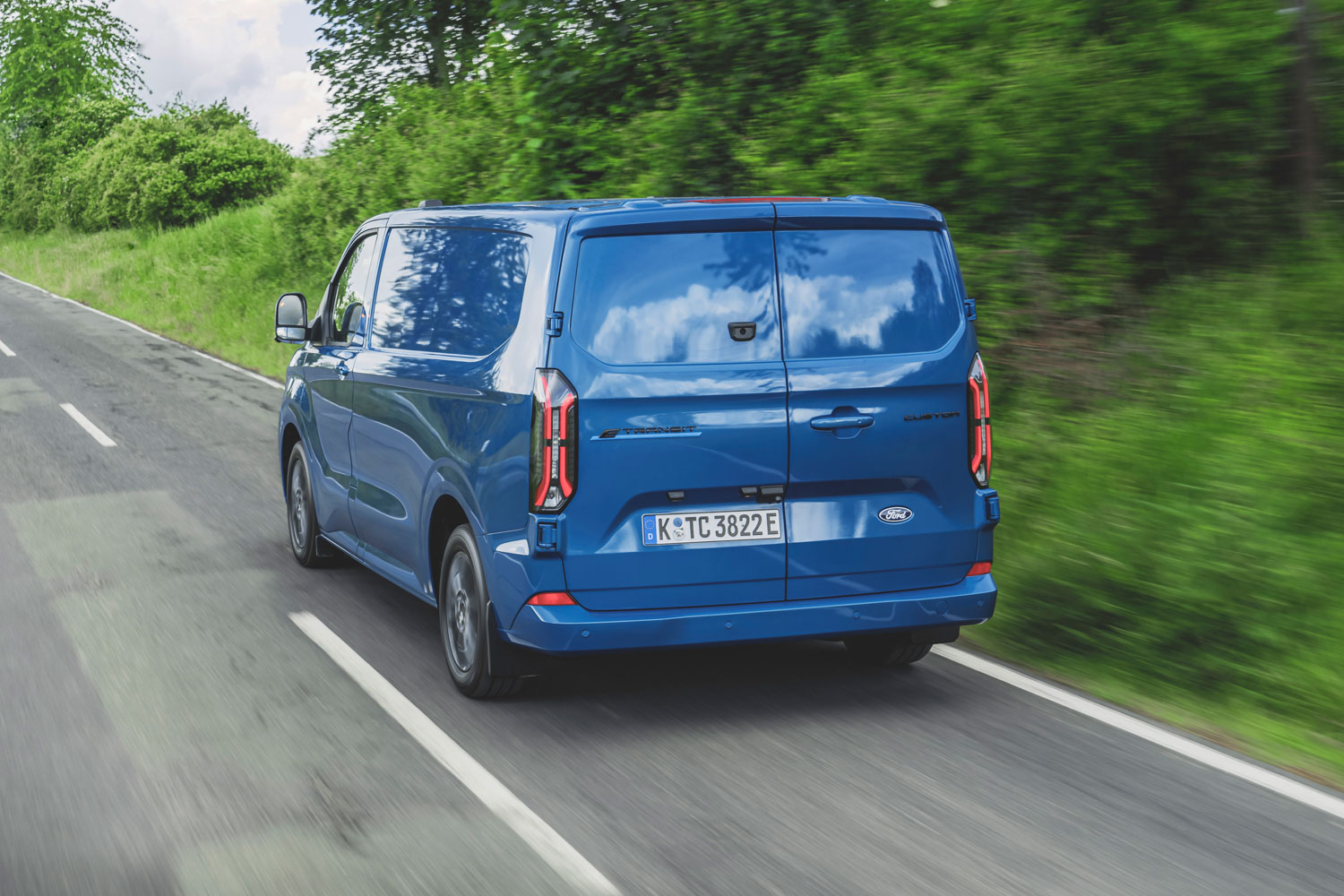
Along with the fancy rear-view camera system, presented on a small digital screen in the interior mirror with an impressive level of clarity, the view out of the e-Transit Custom only helps to make it spectacularly simple to place accurately on the road, whether you’re manoeuvring it around congested side streets in urban areas that are thronged with parked cars, or cruising along a motorway laden at 100km/h and more. A big part of this is excellent steering, even if it is controlled by a vaguely ‘Quartic’-like wheel in the cab.
Add in supreme ride comfort, not always something you can say of commercial vehicles of any type, never mind a panel van, and a fabulous level of rolling refinement – you hear little of wind or tyre noise, even at speed – and this is a van you would be happy going very long distances in at a time. Well, up to 337km, at any rate.
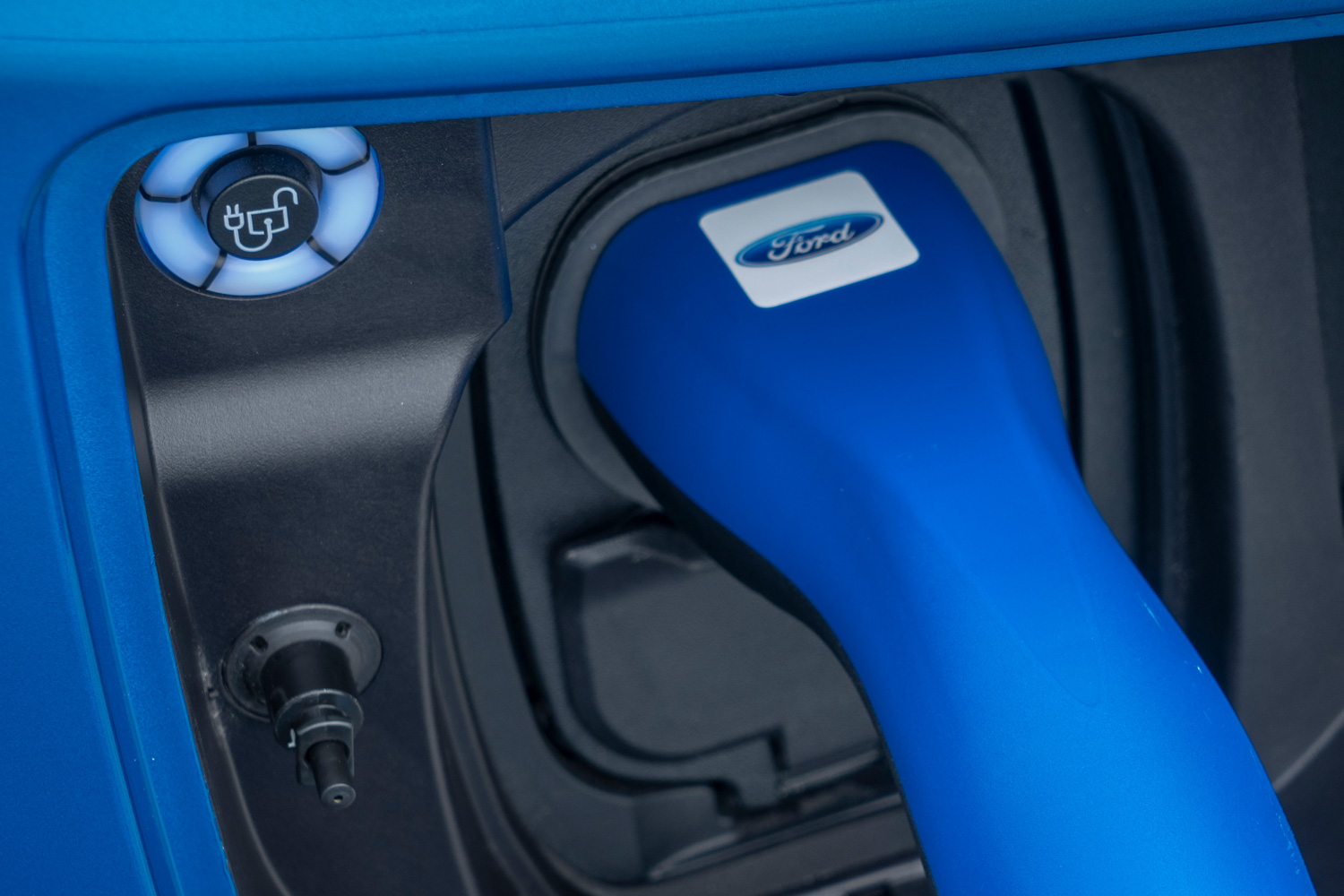
And the energy usage seemed to be about on par with what Ford claims the e-Transit Custom 160kW is capable of, so we have no doubt that 200-250km ought to be easily achievable by most owners, even in adverse weather conditions. Those using it exclusively for urban duties might be capable of genuinely eking 300km from the electric Ford commercial, although we’d need more time behind the fold-down wheel in a variety of conditions to ascertain whether this will be the case.
Alternatives to the Ford e-Transit Custom
An obvious stylish rival is the Volkswagen ID. Buzz Cargo, which has greater range because it has a larger 77kWh battery pack than the Ford, but the payoff for that is a higher kerb weight (around 2.4 tonnes), which in turn leads to a lower payload of 607kg maximum, with just 3.9 cubic metres of space in the load bay to play with as well.
There’s a whole raft of options from within the Stellantis stable, available with either 50- or 75kWh battery packs, and these include the Citroen e-Dispatch, the Peugeot e-Expert, the Toyota Proace Electric, the Fiat e-Scudo and the Opel Vivaro-e – all of which will do around 320km with the bigger power pack listed above. Finally, both the Renault Trafic E-Tech and the Mercedes eVito are options, but neither of them have quite the same claimed range as the e-Transit Custom.
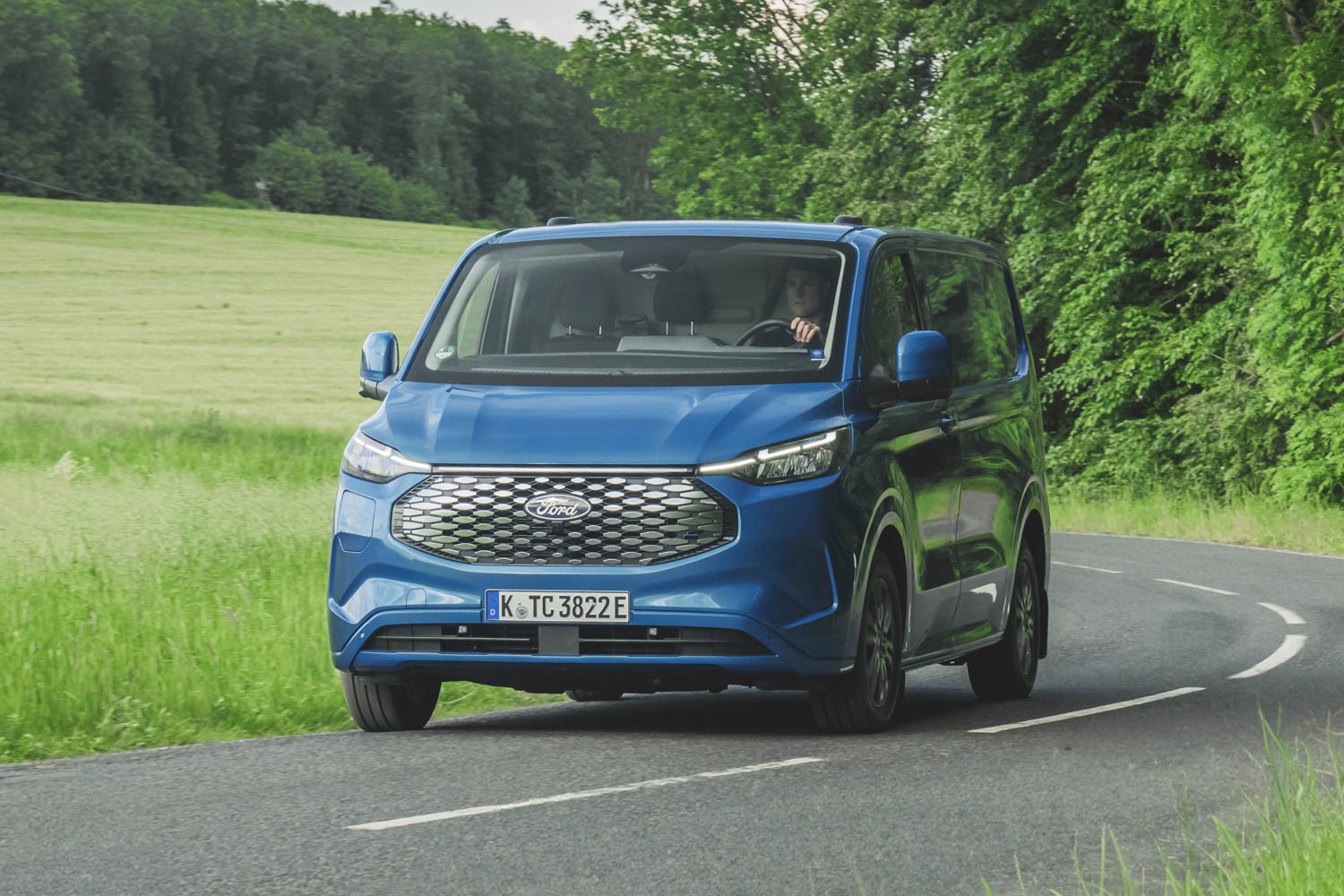
Our verdict on the Ford e-Transit Custom
A brilliant commercial vehicle is made even better with the adoption of electric power, as the Ford e-Transit Custom provides a thoroughly likeable all-round experience. Granted, its limited one-shot range might preclude it from certain use-case businesses, but then there’s always the plug-in hybrid or diesel versions of the Custom for such concerns. If the Ford’s electric range works for your daily trade routes, then it’s a remarkably strong and talented contender in the medium-sized panel van game.


